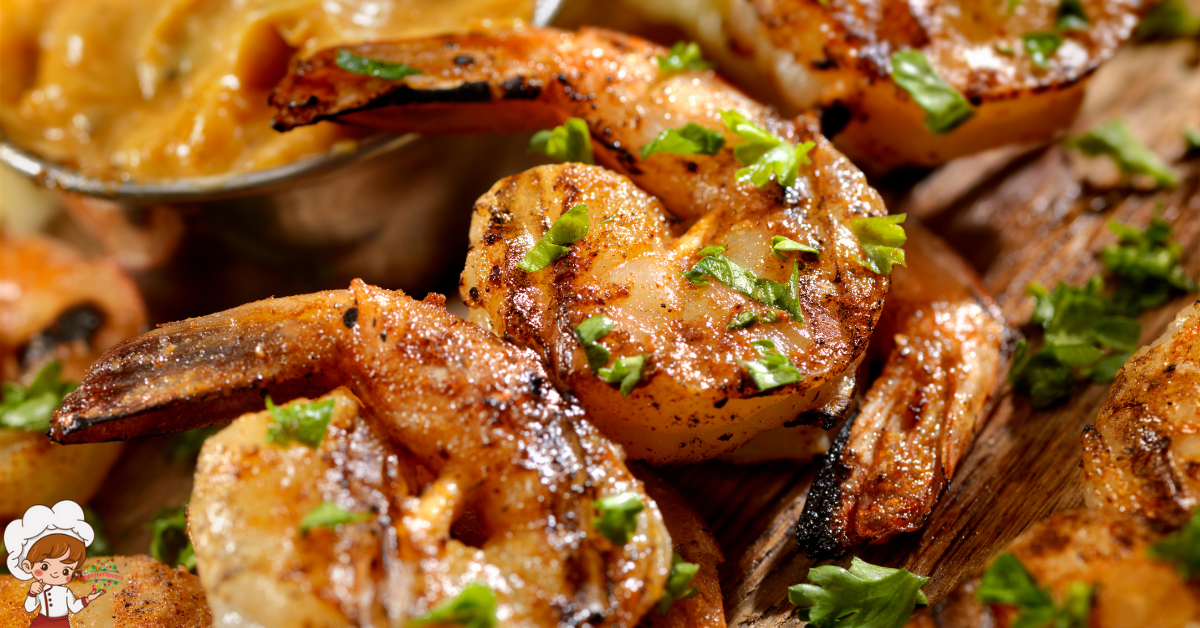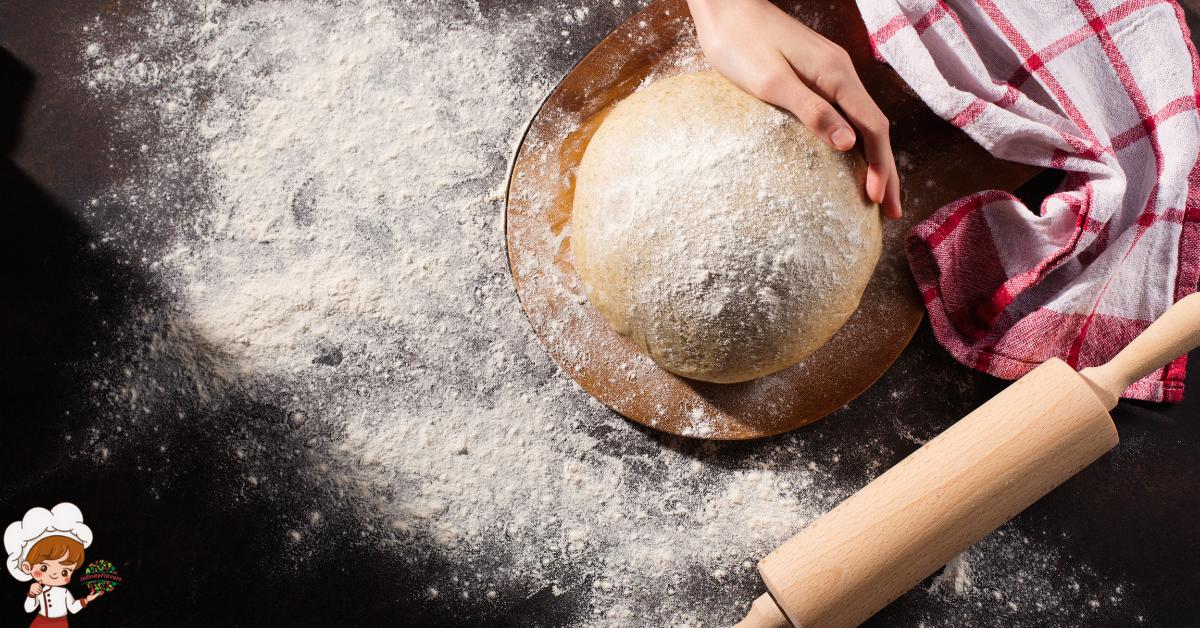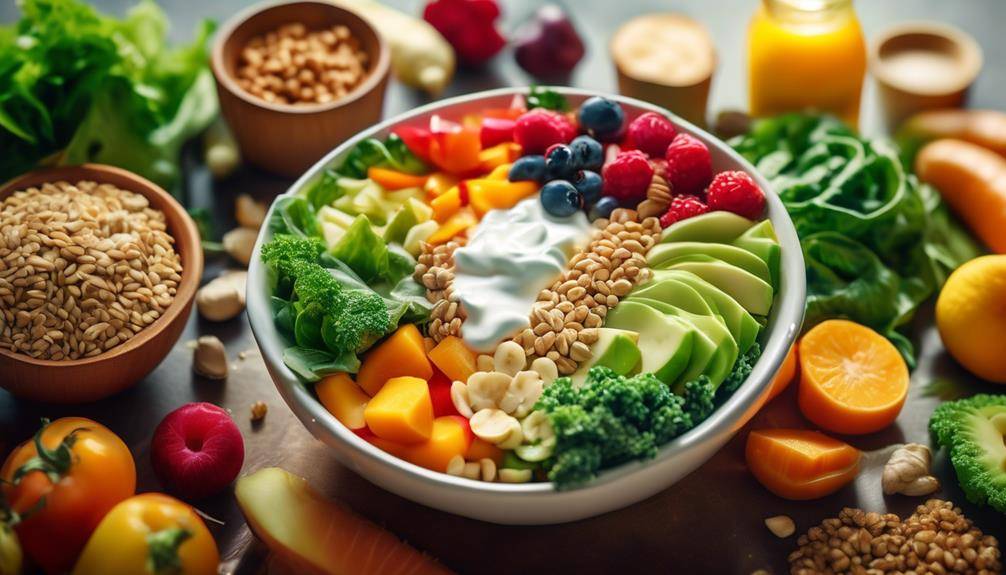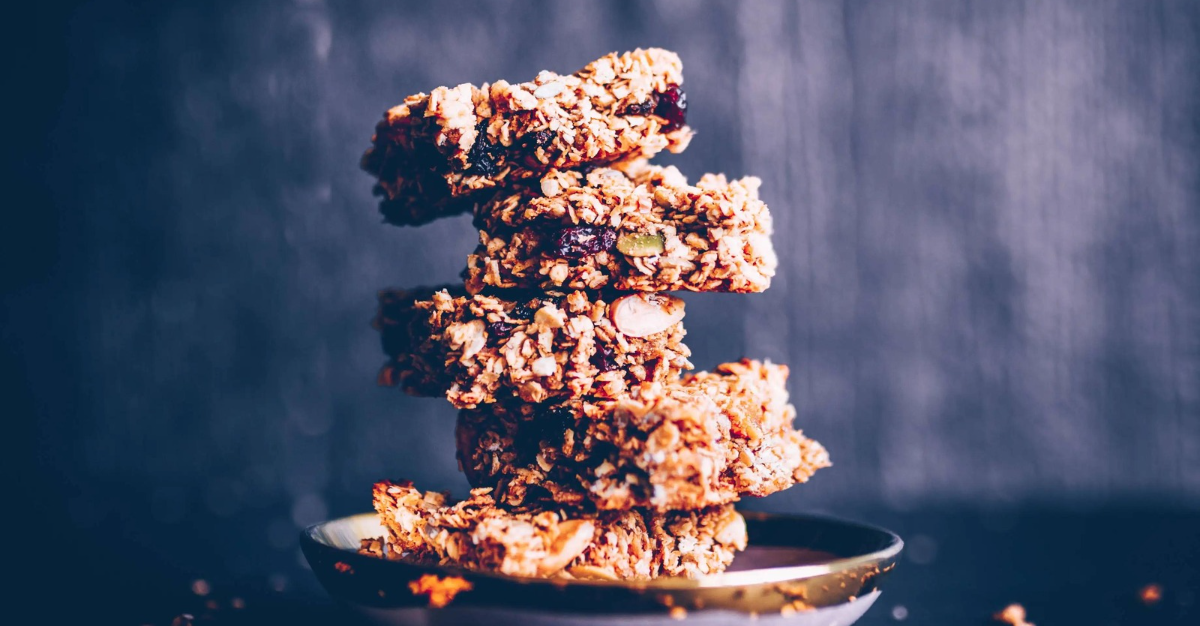How To Gluten-Free Diet for Kids

How To Gluten-Free Diet for Kids; You may be thinking, “Why would I consider putting my child on a gluten-free diet?” Well, let’s address that concern right away. While it’s true that not all children need to avoid gluten, there are some who can benefit greatly from it. Whether your child has been diagnosed with celiac disease or gluten sensitivity, or you simply want to explore the potential benefits of a gluten-free diet, this discussion will provide you with valuable insights and practical tips. So, let’s dive in and discover how a gluten-free diet can positively impact your child’s health and well-being.
What Is Gluten?
Gluten is a protein found in wheat, barley, and rye that can cause adverse reactions in some individuals. If your child has been diagnosed with celiac disease or a gluten intolerance, it is important to understand what gluten is and how it can affect their health. Gluten-free recipes and baking techniques can help you provide delicious and safe meals for your child.
Gluten is what gives bread its elasticity and helps it rise. However, for children with celiac disease or a gluten intolerance, consuming gluten can damage the lining of their small intestine and prevent the absorption of essential nutrients. This can lead to a range of symptoms including abdominal pain, diarrhea, fatigue, and nutrient deficiencies.
To accommodate a gluten-free diet for your child, it is essential to learn about gluten-free recipes and baking techniques. Fortunately, there are numerous alternatives available, such as using gluten-free flours made from rice, corn, or quinoa. These flours can be used to make bread, cakes, cookies, and other baked goods that are safe for your child to consume.
When baking gluten-free, it is important to note that gluten-free flours do not have the same binding properties as wheat flour. To compensate for this, you can add xanthan gum or guar gum to improve the texture and structure of your baked goods. Additionally, experimenting with different gluten-free recipes and techniques can help you find the ones that work best for your child’s taste preferences and dietary needs.
Celiac Disease and Gluten Sensitivity
What are the symptoms and health implications of celiac disease and gluten sensitivity in children? Celiac disease is an autoimmune disorder that affects the small intestine. When children with celiac disease consume gluten, a protein found in wheat, barley, and rye, their immune system responds by attacking the lining of the small intestine. This can lead to various symptoms, including diarrhea, abdominal pain, bloating, weight loss, fatigue, and nutrient deficiencies. In addition to these physical symptoms, celiac disease can also have long-term health implications if left untreated. It can lead to malnutrition, stunted growth, delayed puberty, anemia, osteoporosis, and an increased risk of developing other autoimmune disorders.
Gluten sensitivity, also known as non-celiac gluten sensitivity, is a condition where individuals experience symptoms similar to those with celiac disease but do not have the same immune response or intestinal damage. The symptoms of gluten sensitivity can vary widely and may include abdominal pain, bloating, diarrhea, constipation, headaches, fatigue, and brain fog. While the long-term health implications of gluten sensitivity are not as well-defined as those of celiac disease, it is still important to address the symptoms and consider a gluten-free diet for relief.
The primary treatment for celiac disease and gluten sensitivity is a strict gluten-free diet. This means avoiding all foods and products that contain gluten, including bread, pasta, cereals, sauces, and processed foods. It is essential to read food labels carefully and look for gluten-free certifications to ensure that products are safe to consume. While the gluten-free diet may seem challenging, there are now many gluten-free alternatives and products available to make the transition easier. It is also important to consult with a healthcare professional or registered dietitian for guidance and support in managing celiac disease or gluten sensitivity.
Benefits of a Gluten-Free Diet for Kids
To reap the benefits of a gluten-free diet for your child with celiac disease or gluten sensitivity, it is important to understand the positive impact it can have on their overall health and well-being. Here are four key benefits of a gluten-free diet for kids:
- Improved Digestive Health: By eliminating gluten from your child’s diet, you can help relieve symptoms such as bloating, diarrhea, and constipation. Gluten can cause inflammation and damage to the lining of the small intestine in children with celiac disease or gluten sensitivity. Removing gluten allows the intestine to heal and promotes better digestion.
- Increased Energy Levels: Many children with celiac disease or gluten sensitivity experience fatigue as a result of their body’s inability to properly absorb nutrients from food. A gluten-free diet can help improve nutrient absorption, leading to increased energy levels and improved overall stamina.
- Enhanced Nutritional Intake: When going gluten-free, it is important to focus on replacing gluten-containing foods with nutritious alternatives. This can lead to an increase in the consumption of fruits, vegetables, lean proteins, and whole grains such as quinoa and brown rice. By diversifying your child’s diet, you can ensure they receive a wider range of essential vitamins and minerals.
- Expanded Culinary Options: Contrary to popular belief, a gluten-free diet doesn’t have to be restrictive or boring. There are countless gluten-free recipes and baking alternatives available, allowing your child to still enjoy their favorite foods. From gluten-free pizza crusts to delicious gluten-free cookies, there are plenty of options to satisfy your child’s cravings while maintaining a healthy diet.
Foods to Avoid on a Gluten-Free Diet
When following a gluten-free diet, it is important to be aware of the foods to avoid. Firstly, it is crucial to steer clear of gluten-containing pantry staples such as wheat flour, barley, and rye. Secondly, it is essential to be aware of hidden sources of gluten, which can be found in foods like processed meats, sauces, and condiments. By being mindful of these points, you can ensure that your child’s diet remains gluten-free and safe.
Gluten-Free Pantry Staples
Stocking your pantry with gluten-free staples is essential for maintaining a healthy and balanced diet free of gluten. When it comes to gluten-free baking, there are a few pantry staples you should have on hand. Here are four items you should include in your gluten-free pantry:
- Gluten-free flour blends: These blends are made from a combination of alternative flours like rice flour, almond flour, or tapioca flour. They can be used as a substitute for all-purpose flour in your favorite recipes.
- Gluten-free grains: Quinoa, buckwheat, and brown rice are excellent gluten-free options that can be used as a base for meals or as a side dish. They provide essential nutrients and fiber.
- Gluten-free pasta: Look for pasta made from alternative grains like brown rice or quinoa. They taste just as delicious as traditional pasta and can be used in any pasta dish.
- Gluten-free bread: Having gluten-free bread on hand is essential for making sandwiches or toast. Look for options made from gluten-free grains like rice or oats.
Hidden Sources of Gluten
Maintaining a gluten-free diet requires being aware of hidden sources of gluten in order to effectively manage your child’s dietary needs. Even foods that seem naturally gluten-free can sometimes contain gluten due to cross-contamination during processing or cooking. It is important to read labels carefully and choose products that are certified gluten-free. Some common hidden sources of gluten include sauces, dressings, and condiments that may contain wheat or barley ingredients.
Additionally, certain medications, vitamins, and supplements can contain gluten as a binding agent. When it comes to baking gluten-free, it is essential to use gluten-free flours and ingredients and follow gluten-free baking techniques. This includes using separate utensils, baking pans, and cutting boards to prevent cross-contamination. By being vigilant and knowledgeable about hidden sources of gluten, you can ensure your child’s gluten-free diet is safe and effective.
Gluten-Free Alternatives and Substitutions
If your child follows a gluten-free diet, there are numerous alternatives and substitutions available to ensure they still enjoy a wide variety of delicious and nutritious options. Here are four options to consider:
- Gluten-Free Baking: When it comes to baking, there are several gluten-free flour options to choose from, such as almond flour, coconut flour, and rice flour. These alternatives can be used in place of traditional wheat flour to make gluten-free bread, cakes, cookies, and more. Experiment with different combinations to find the perfect texture and taste for your child’s favorite treats.
- Gluten-Free Pasta Options: Pasta is a staple in many households, but for gluten-free families, there are plenty of alternatives available. Look for pasta made from rice, corn, quinoa, or legumes like chickpeas or lentils. These options provide a similar taste and texture to traditional wheat-based pasta, ensuring that your child can still enjoy their favorite pasta dishes without any gluten.
- Cauliflower Rice: If your child loves rice but needs to avoid gluten, cauliflower rice is a fantastic substitute. Simply grate or process cauliflower into small, rice-like grains, then cook it as you would regular rice. Cauliflower rice is low in carbohydrates and packed with nutrients, making it a healthier alternative for your child.
- Gluten-Free Snacks: There are now many gluten-free snack options available in stores. From gluten-free crackers and pretzels to granola bars and popcorn, you can find a wide variety of snacks that are safe for your child to enjoy. Additionally, you can make your own snacks at home using gluten-free ingredients like nuts, seeds, dried fruits, and gluten-free oats.
How to Read Food Labels for Gluten
To ensure that your child’s gluten-free diet is successful, it is important to know how to properly read food labels for gluten. Reading food labels can be challenging, but with a little practice, you can become an expert at identifying gluten-containing ingredients. When it comes to gluten-free certification, look for labels that specifically state “gluten-free” or display a gluten-free symbol. These certifications indicate that the product has undergone testing and meets the necessary standards to be considered safe for those with gluten sensitivities.
When reading food labels, start by checking the ingredient list. Look for common gluten-containing ingredients such as wheat, barley, rye, and oats. Keep in mind that oats are often cross-contaminated with gluten during processing unless they are specifically labeled as gluten-free. Additionally, be aware of less obvious sources of gluten, such as modified food starch or malt extract.
In addition to the ingredient list, pay attention to any allergen statements or warnings on the packaging. Some products may be processed in facilities that also handle gluten-containing ingredients, increasing the risk of cross-contamination. If the label states that the product may contain traces of gluten, it’s best to avoid it to prevent any potential reactions.
When in doubt, reach out to the manufacturer for clarification. Many companies have dedicated customer service lines or websites where you can inquire about specific products. They can provide you with valuable information about the manufacturing process and any potential risks of cross-contamination.
Creating a Balanced Gluten-Free Meal Plan
When planning a balanced gluten-free meal plan for your child, it is important to consider their specific dietary needs and ensure they are getting all the necessary nutrients for their growth and development. Here are some tips to help you create a balanced gluten-free meal plan for your child:
- Include a variety of whole grains: While gluten-containing grains like wheat, barley, and rye are off-limits, there are still plenty of gluten-free grains available. Include alternatives like rice, quinoa, millet, and oats (certified gluten-free) to provide essential vitamins, minerals, and fiber.
- Focus on fruits and vegetables: These should form the foundation of your child’s meals. Fruits and vegetables are naturally gluten-free and provide important nutrients like vitamins, minerals, and antioxidants. Aim for a colorful plate with a variety of fruits and vegetables to ensure a well-rounded diet.
- Don’t forget about protein: Include lean sources of protein such as chicken, fish, eggs, and legumes in your child’s meals. These foods are naturally gluten-free and provide essential amino acids for growth and development.
- Plan ahead and meal prep: Creating a balanced gluten-free meal plan requires some planning. Take some time each week to plan your child’s meals and snacks. This will help ensure they have a variety of nutritious options available. Consider batch cooking and meal prepping to make mealtime easier and more convenient.
Gluten-Free Snack Ideas for Kids
For gluten-free snack ideas that are both delicious and nutritious, consider incorporating a variety of options that will satisfy your child’s cravings and provide them with essential nutrients. Snacks play an important role in a child’s diet, as they help to keep their energy levels up throughout the day. Here are some gluten-free snack ideas that your child will love.
- Fresh Fruits and Vegetables: Keep a variety of fresh fruits and vegetables on hand for quick and easy snacks. Slice up some apples, carrots, or cucumbers and pair them with a gluten-free dip, such as hummus or guacamole.
- Yogurt Parfaits: Layer gluten-free granola, yogurt, and fresh berries in a small cup or jar for a tasty and nutritious snack. You can also add a drizzle of honey or a sprinkle of cinnamon for extra flavor.
- Rice Cakes with Nut Butter: Rice cakes are a great gluten-free alternative to traditional crackers. Spread some nut butter, like almond or peanut butter, on top for a satisfying and protein-packed snack.
- Gluten-Free Baking Recipes: Get creative in the kitchen and try making gluten-free snacks from scratch. There are plenty of gluten-free baking recipes available online that use alternative flours, such as almond flour or coconut flour. From gluten-free cookies to muffins, the options are endless.
- Leftovers from Gluten-Free Lunch Ideas: Don’t forget about leftovers! If you have prepared gluten-free meals for your child’s lunch, save some portion for their snack time. This way, you can ensure that they are getting a balanced and nutritious snack.
Tips for Dining Out on a Gluten-Free Diet
When dining out on a gluten-free diet, it is important to know that there are menu options available for you. You can communicate your dietary needs to the restaurant staff, who can assist you in making safe choices. Additionally, it is crucial to be aware of cross-contamination risks and take necessary precautions to avoid them.
Menu Options
To ensure a successful dining experience on a gluten-free diet, it is important to be knowledgeable about menu options and make informed choices. Here are four tips for dining out on a gluten-free diet:
- Research restaurants in advance: Before going out, take the time to research restaurants that offer gluten-free options. Look for menus online or call ahead to inquire about their gluten-free options.
- Communicate your dietary needs: When you arrive at the restaurant, inform the staff about your gluten-free diet. Ask questions about ingredients and preparation methods to ensure your meal is truly gluten-free.
- Be cautious with cross-contamination: Cross-contamination can occur when gluten-free food comes into contact with gluten-containing food. Ask the staff if they have dedicated cooking areas or separate utensils to prevent cross-contamination.
- Stick to simple, naturally gluten-free dishes: Opt for dishes that are naturally gluten-free such as grilled meats, salads, and vegetables. These options are less likely to contain hidden sources of gluten.
Communicating Dietary Needs
To ensure a successful dining experience on a gluten-free diet, it is essential to effectively communicate your dietary needs when dining out. Here are some tips to help you navigate dining out on a gluten-free diet. First, do your research and find restaurants that offer gluten-free options or are knowledgeable about gluten-free diets. When you arrive at the restaurant, notify your server about your dietary restrictions and ask for guidance in choosing gluten-free menu items. Be clear and specific about your needs to avoid cross-contamination. Ask about ingredients and preparation methods to make sure your meal is truly gluten-free.
Additionally, it’s important to communicate with schools about your child’s gluten-free diet. Provide detailed information to the school about your child’s dietary needs, and work with the staff to develop a plan that ensures your child’s safety and inclusion. Finally, when attending gluten-free birthday parties, consider bringing gluten-free snacks or treats that your child can enjoy. Remember to communicate with the host in advance to discuss any necessary accommodations. By effectively communicating your dietary needs, you can have a safe and enjoyable dining experience on a gluten-free diet.
Cross-Contamination Awareness
Cross-contamination is a significant concern when dining out on a gluten-free diet, as even small traces of gluten can cause adverse reactions for individuals with gluten sensitivity or celiac disease. To ensure a safe dining experience, here are some tips to prevent cross-contamination:
- Communicate your dietary needs: Inform the restaurant staff about your gluten-free requirements and ask if they have a separate preparation area for gluten-free meals.
- Review the menu carefully: Look for dishes labeled as gluten-free or ask the staff for recommendations. Avoid foods that are more likely to contain gluten, such as fried items or dishes with sauces and gravies.
- Inquire about gluten-free cooking techniques: Ask the restaurant if they use separate utensils, cutting boards, and fryers to prepare gluten-free meals. This helps minimize the risk of cross-contamination.
- Be vigilant: Even if the staff assures you that a dish is gluten-free, visually inspect your food for any signs of cross-contamination, such as breadcrumbs or croutons.
Frequently Asked Questions: How To Gluten-Free Diet for Kids
Are There Any Risks or Side Effects Associated With a Gluten-Free Diet for Kids?
When considering a gluten-free diet for kids, it’s important to understand the risks and potential side effects. While some may experience nutrient deficiencies, others may develop an unhealthy relationship with food.
Can a Gluten-Free Diet Help With Behavioral Issues or Cognitive Development in Children?
A gluten-free diet might help improve behavioral issues and cognitive development in children. It could positively impact social interactions and potentially manage symptoms of ADHD. However, further research is needed to fully understand its effectiveness.
Is It Necessary to Completely Eliminate Gluten From a Child’s Diet, or Can They Consume Small Amounts Occasionally?
It’s important to consider your child’s gluten sensitivity when deciding whether to eliminate gluten from their diet completely. However, there are gluten-free alternatives for kids that can be incorporated occasionally to ensure a balanced diet.
How Can I Ensure That My Child Is Getting All the Necessary Nutrients and Vitamins on a Gluten-Free Diet?
To ensure your child gets all the necessary nutrients on a gluten-free diet, focus on incorporating a variety of fruits, vegetables, lean proteins, and gluten-free grains. Encourage them to try new foods and involve them in meal planning and preparation.
Are There Any Long-Term Effects or Potential Complications of Following a Gluten-Free Diet From an Early Age?
Following a gluten-free diet from an early age may have potential complications and long-term effects. It’s important to consult with a healthcare professional to ensure your child receives all necessary nutrients and vitamins.
Conclusion
In conclusion, a gluten-free diet can be beneficial for children with celiac disease or gluten sensitivity. By avoiding foods that contain gluten, children can experience improved digestive health, better nutrient absorption, and reduced symptoms. It is important to read food labels carefully and make use of gluten-free alternatives and substitutions. With proper planning and a balanced meal plan, children can enjoy a healthy and varied diet that is free from gluten. When dining out, it is helpful to communicate with restaurant staff and make informed choices to ensure a gluten-free meal.








